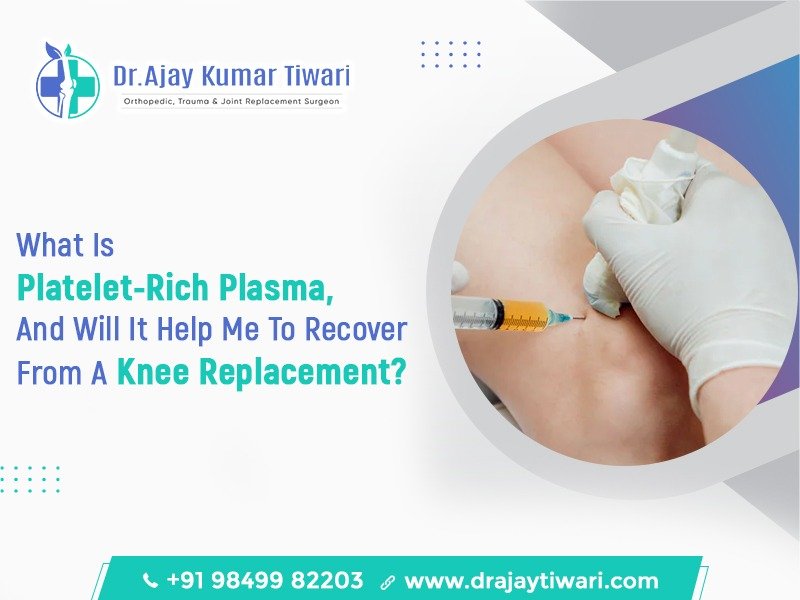
What is Platelet Rich Plasma ? Will it help me to recover from a knee replacement?
Knee arthroplasty is considered successful when the tissue is completely healed, the pain is controlled, and the joint functions properly. The major concerns of a knee replacement are bleeding, infections etc. In order to overcome these problems, fibrin glue is initially used. Due to the fact that it is derived from human plasma, it has shown positive results in terms of contamination and immunological reactions, as well as bleeding control.
Although fibrin glue appeared to have good initial results, considering the possibility of cross-contamination and the difficulty in acquiring this compound, experts suggested using concentrations of autologous platelets, also known as Platelet Rich Plasma (PRP), for improving the healing. In addition, recent studies have found that it has antibacterial and antifungal properties as well.
Application of PRP in knee arthroplasty
A good biologic augmentation method should be simple to use, safe, affordable, and clinically effective. PRP can be administered in several ways to heal the tendon, ligament, or bone. First, PRP is carefully administered in an arthroplasty setting through an injection into the operating area after placing the implant or by spraying it on the wound before and after closing the surgical site with stitches.
When the joint is opened for knee replacement, the PRP gel is applied to the posterior and suprapatellar recessed surfaces, the medial gutters, protruding bone surfaces of the tibia and femur. Aspiration drainage was used to close the wound. The rest of the activated PRP liquid is infiltrated into subcutaneous tissue.
At present, there is limited research and scant information available about utilizing PRP in total knee arthroplasty (TKA) and total shoulder arthroplasty (TSA). Moreover, research is lacking on how exactly PRP may benefit ankle, hip, or elbow reconstruction. The majority of studies now analyze the use of PRP in joint replacement surgeries, which makes it more difficult to conclude now whether it is beneficial scientifically. Experts, however, say it is worth considering for joint replacements like the shoulder and knee.
Among the available studies on PRP, the vast majority examine its impact on wound healing, managing postoperative pain, postoperative range of motion, and the need for blood transfusion after surgery.
Definition of PRP
The term platelet-rich plasma (PRP) is defined as a small portion of blood plasma, which contains an increased proportion of blood platelets compared to normal blood plasma. Typically, plasma contains a high concentration of platelets, along with white blood cells in minor amounts and some other blood components. The application of PRP does not carry the threat of transmissible infections due to its high concentration of platelets, growth factors, cytokines, and fibrin products.
PRP also consists of some other proteins like thromboxane A2, thrombin and adenosine diphosphate. They tend to attract more platelets from the general supply to the damaged area, which in turn amplifies their effectiveness, promotes wound healing, and enables more effective hemostasis and recovery.
PRP is a safe, simple, and effective procedure for Total Knee Arthroplasty, Shoulder Arthroplasty and other joint replacements. The results, irrespective of studies, unequivocally show that PRP has the potential to reduce blood loss after surgery, the need for opioids, and increase range of motion.
To know more detailed information about the usage and benefits of PRP in joint replacements, consult Dr. Ajay Kumar Tiwari, Orthopedic Joint Replacement Surgeon in Hyderabad. If you have any joint problems, he will evaluate your problem and let you know whether you are an ideal candidate for PRP treatment or not. Call +91 98499 82203 to schedule an appointment with the doctor.





